Car seats are a fantastic and essential invention that keeps your baby safe when travelling in the car with you. But there are a lot of rules and regulations around them which can be confusing to keep on top of, including how long can a baby be in a car seat.
How long can a baby be in a car seat?
Safety experts and car seat/travel system manufacturers have all agreed on a set safety standard. They recommend only using the car seat for two hours within a 24 hour time period. You may have heard this be referred to as 'the 2 hour rule.'
This advice is not only recommended for car seats but any travel system, buggy or pushchair where the baby is not in a lie-flat position.
Why the 2 hour rule?
The 2 hour rule is based on the research and current evidence detailed below. But to keep it simple, when a baby is in a semi-upright position for a prolonged period of time it can result in:
-
Restricted airflow to baby's lungs, causing breathing issues
-
A strain on baby's developing spine
For this reason, many parents opt for a lie flat car seat for their newborns.
Can my baby sleep in the car?
Often babies fall asleep in the car which is fine for a short amount of time if they are supervised. However, car seats should only be for travelling and are not generally a safe sleep environment. The recommended sleeping position for young infants is flat on their back. You should ensure that your baby is taken out of the car seat as soon as you get to your destination and placed onto a firm, flat, waterproof mattress (which is in good condition) for the first six months minimum. This is either in a cot or Moses basket.
What the research says about how long your baby should be in a car seat
The American Academy of Pediatrics (AAP) recommends that in neonatal units preterm babies are monitored in a car seat for apnoea, bradycardia or oxygen desaturations before they are safe for discharge. This test is often referred to as the Infant Car Seat Challenge. This advice is followed by many UK hospitals. Previous research in Pediatrics and The Journal of Paediatrics suggests that preterm babies are more at risk from these heart and breathing complications when restrained in car seats. This is due to the scrunched position of upright car seats which can restrict a baby's airways.
The Infant Car Seat Challenge assesses babies in a static car seat. The test does not take into account the impact of the upright position and the motion or vibration of a car seat when travelling. A study funded by the Lullaby Trust* assessed the impact of motion and an upright position on both preterm and term infants. To make the test as realistic as possible, a simulator was designed to reproduce vertical vibration similar to that in a rear-facing car seat at 30 mph.
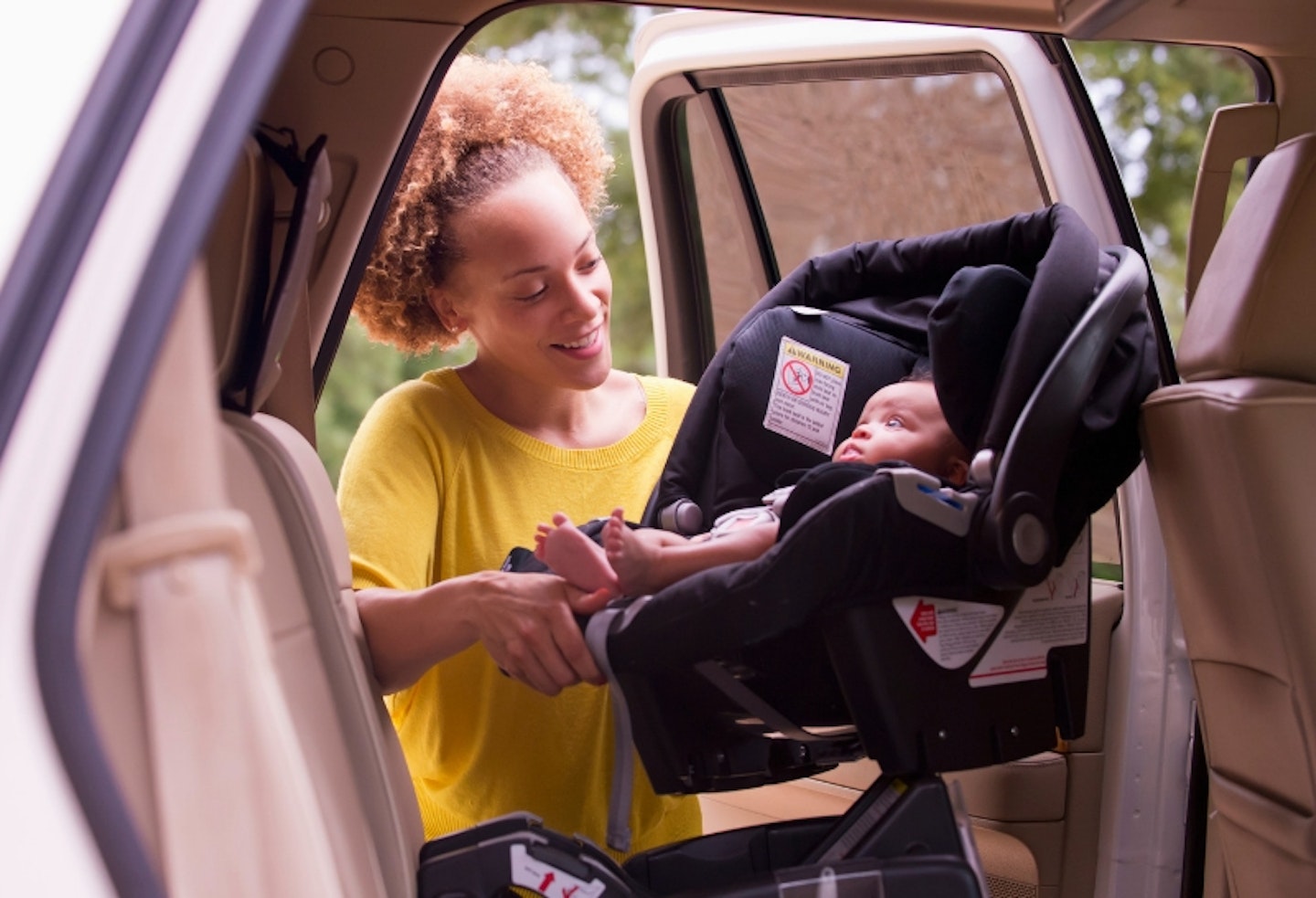
In this study, researchers found that both term and pre-term infants showed signs of potentially adverse cardiorespiratory effects when seated in an upright position at 40°. Put simply, when newborn or premature babies sat in a car seat for 30 minutes, their heart and breathing rate increased, and their blood oxygen levels were lower compared with lying flat in a cot. This is because when they are young, babies do not have the ability and strength to hold up their own head meaning their airways can become restricted.
The negative health effects were more significant when the babies were seated at 40° than at 30°. This suggests that the upright position is a more significant factor than a prolonged period sitting in a car seat. These adverse effects were discovered particularly with the simulated motion, which is not identified in the standard car seat challenge. The important finding suggests that if infants spend periods of time in an upright position and in motion, they can experience adverse health effects in as little as 30 minutes.
These results do not mean you should panic or stop using car seats. The Lullaby Trust firmly acknowledges the importance of car seats when travelling. Their chief executive Francine Bates said: "We recommend that parents also avoid driving long distances without a break. However, avoiding the risk of injury due to a road traffic accident is paramount and fitted car seats should always be used to transport babies and toddlers." A baby should always be in a car seat on journeys and they provide excellent protection and safety measures in the case of an accident. However, parents should ensure they limit the amount of time babies spend in a car seat, where possible.
Dr Renu Arya of the Great Western Hospitals NHS Foundation Trust paediatric department also added that "Parents should not stop using car safety seats to transport their infants. Infants must be protected in moving vehicles, and UK law requires car seats be used whenever infants travel in cars. However, our findings support the AAP (American Academy of Paediatrics) guideline that infant car seats should not be used as a routine infant sleep environment." Young babies sleep regularly and may feel relaxed and fall asleep in their car seat but it is important that they are not used regularly as somewhere for the baby to sleep.
Although these findings do imply there are risks involved when using car seats, it is important to note that this pilot study was on a relatively small scale and the risk of complications are still slim. There are also several steps and rules that you can follow when using a car seat to ensure you are doing so in the safest way possible.
How long can my child use a car seat for?
The Government guidelines insist that children use a car seat until they are 12 years old or 135 centimetres tall, depending on which comes first.
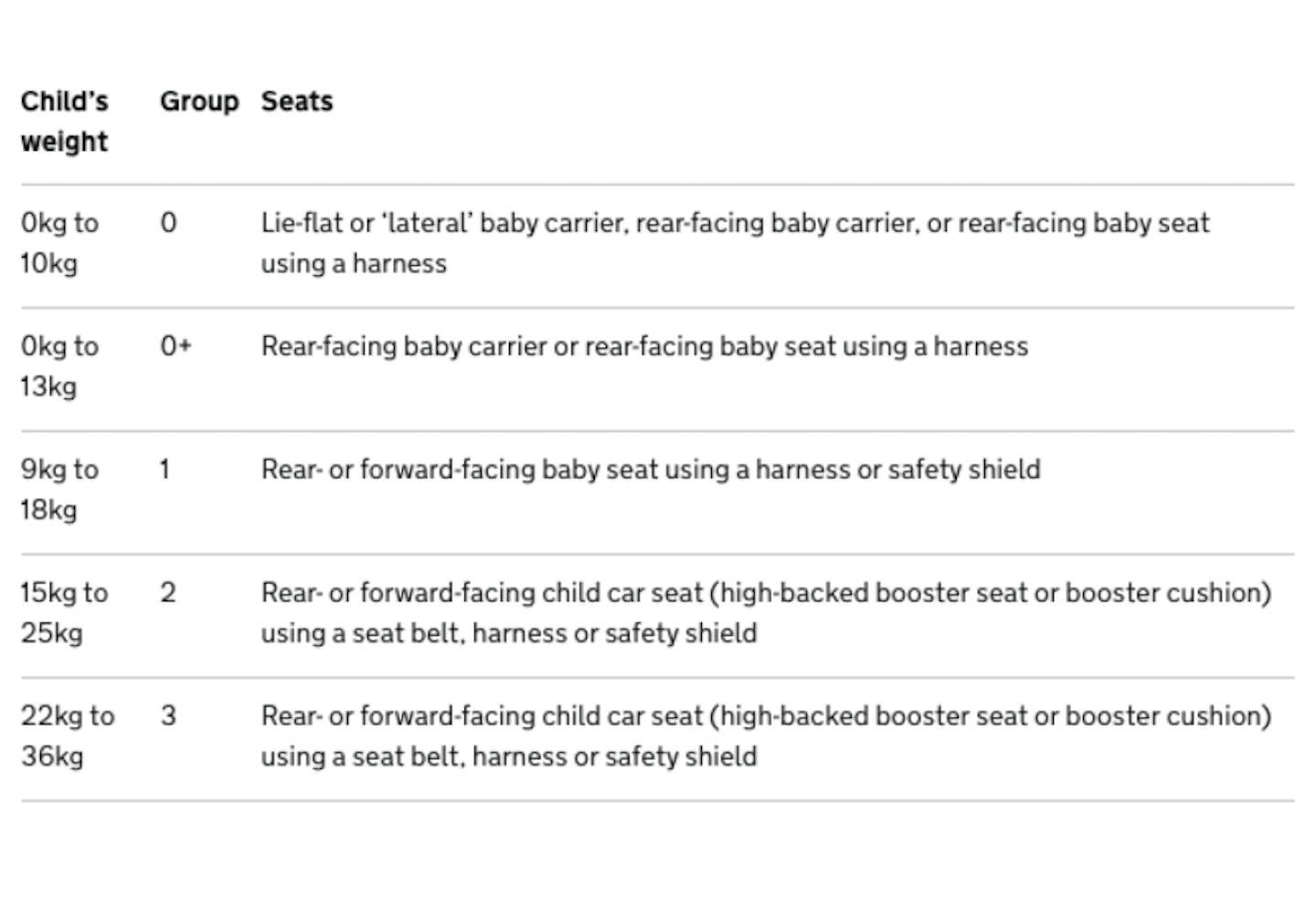
However, it is important to always ensure that your car seat is used correctly and safely. Car seats and travel systems may be misused which can result in dangerous consequences. If a car seat is used for too long or as a generic sleep environment in severe cases it can cause death in young babies.
Key car seat safety points
car seat safety rules
 1 of 10
1 of 101) Fasten properly
Ensure that the car seat is fastened properly. If the car seat is not done up correctly to the safety standards on the instructions the baby is at more risk or slipping down or slumping. A baby should never be in a car seat with unbuckled or partially buckled straps.
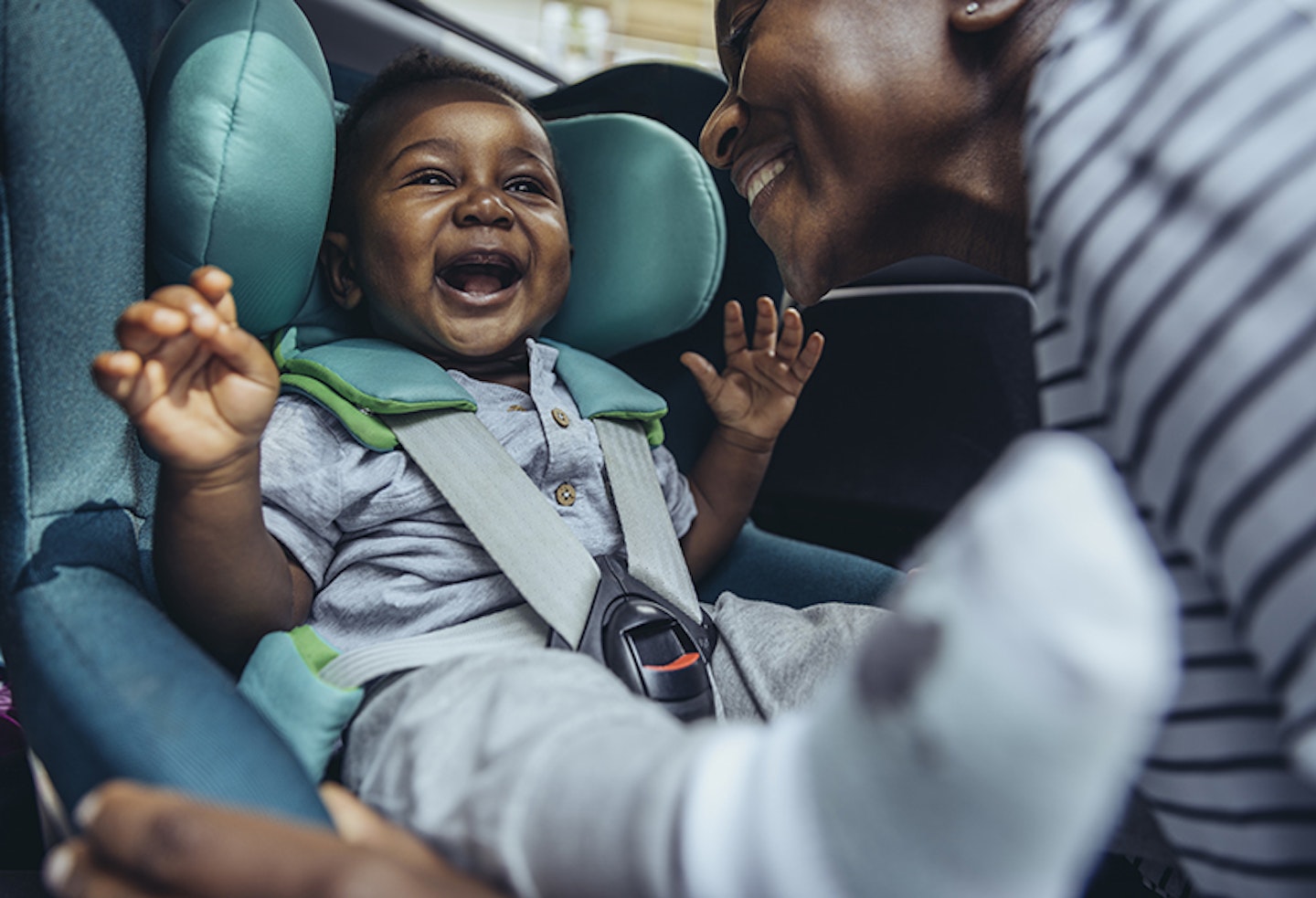 2 of 10
2 of 102) Find the right car seat
Always make sure that you do your research when buying a car seat to find the right option for you. Ensure the car seat you buy is age appropriate for your baby. There are several different manufacturers with different styles but always check safety guidelines and recommendations. It's also worth checking which car seats are compatible with your car, most modern cars now have ISOFIX but do check before you buy.
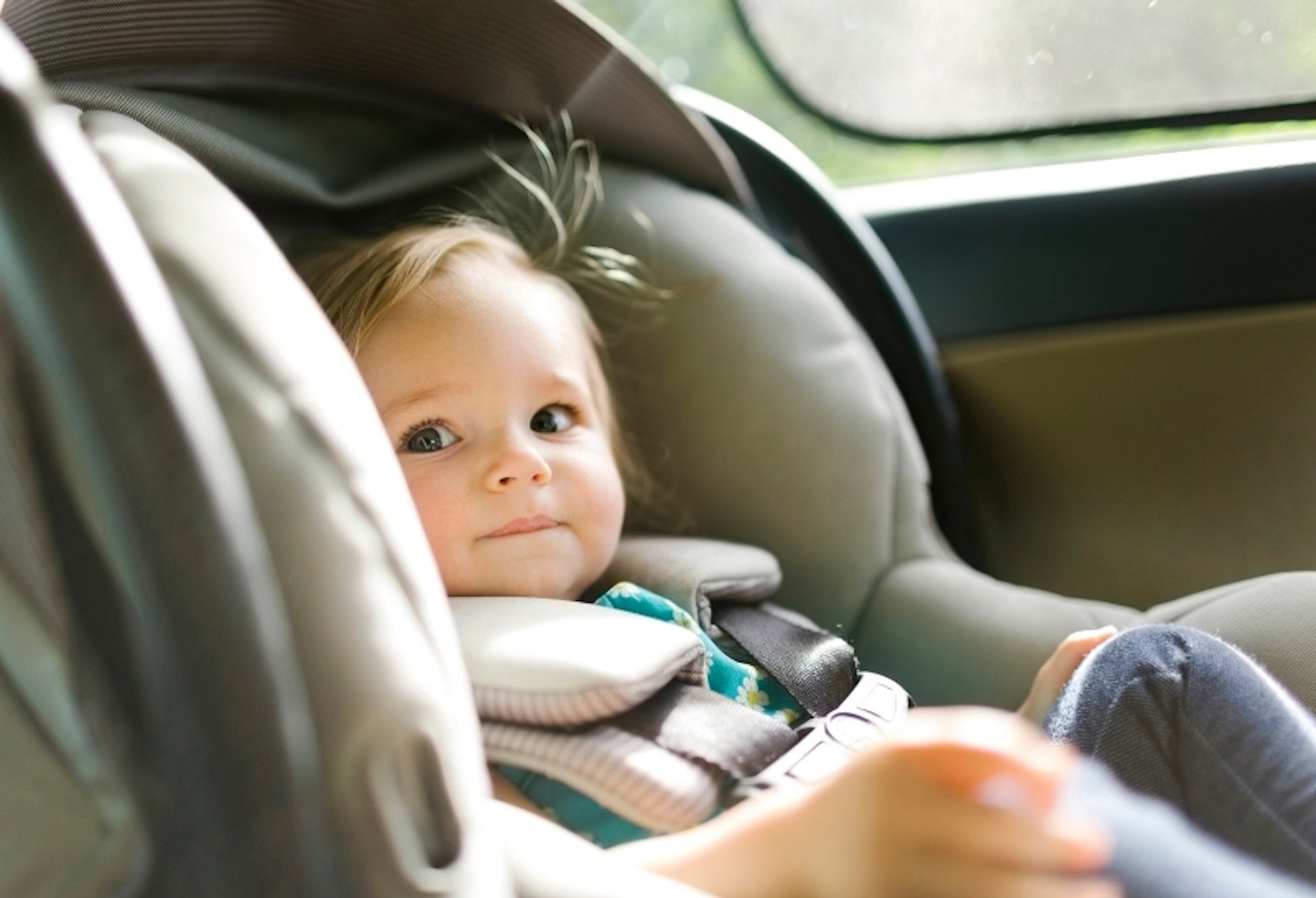 3 of 10
3 of 103) Avoid traveling for long periods
This advice is especially important for pre-term or young babies. If it is possible, avoid travelling for long periods with your baby in the car. If it cannot be avoided then make sure to take breaks.
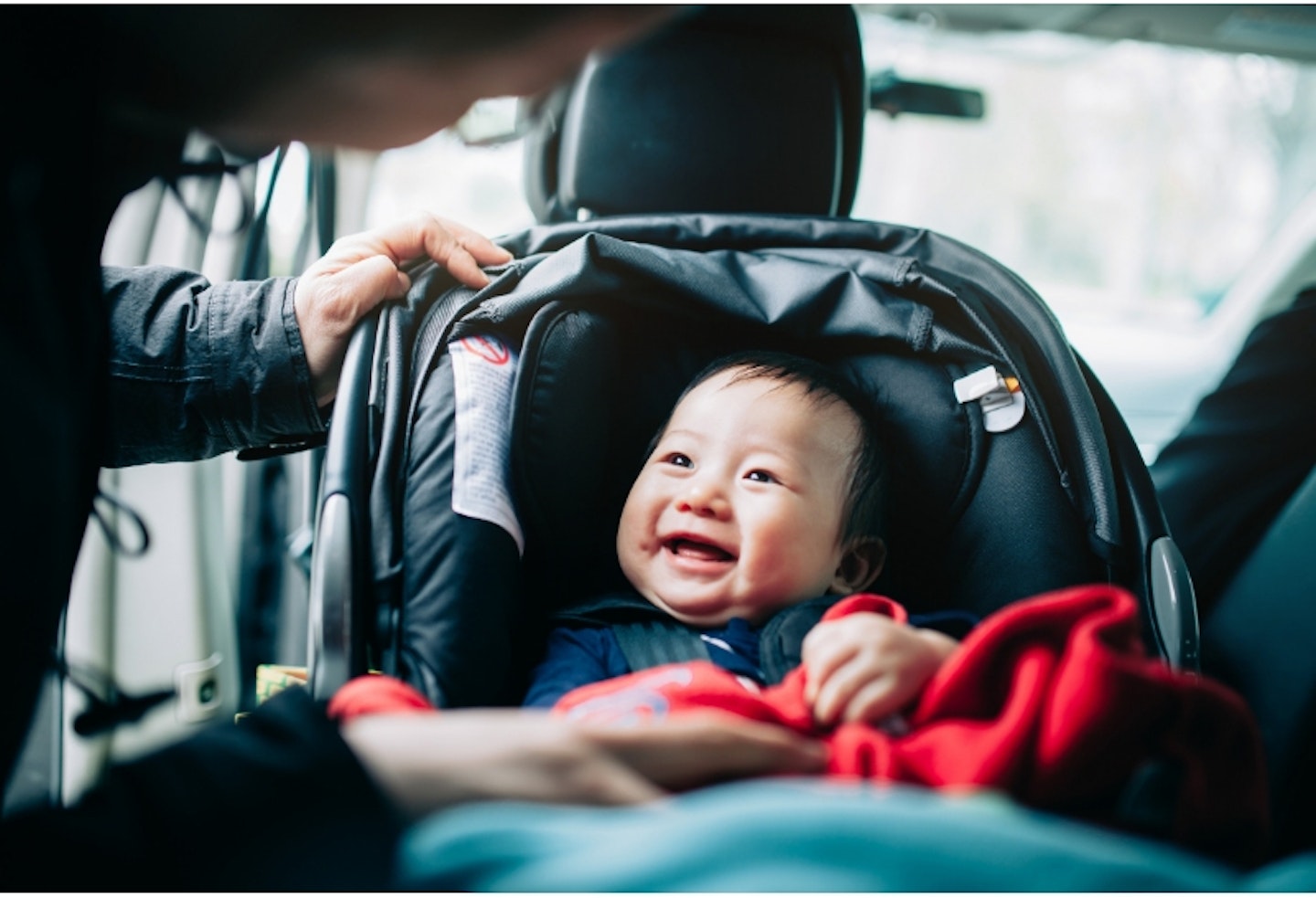 4 of 10
4 of 104) 2-hour rule
The 2-hour rule is the safety standard set by experts and car seat manufacturers. With a young infant, do not exceed two hours in the car seat within a 24 hour time period. According to Baby Safe: "Many car seat manufacturers recommend that a baby should not be in a car seat for longer than 2 hours, within a 24 hour time period. This is because when a baby is in a semi-upright position for a prolonged period of time it can result in:
1. A strain on the baby’s still-developing spine.
2. Restricted air-flow to the baby’s lungs. The chance of this can increase if a baby falls asleep with their head flopped forward."
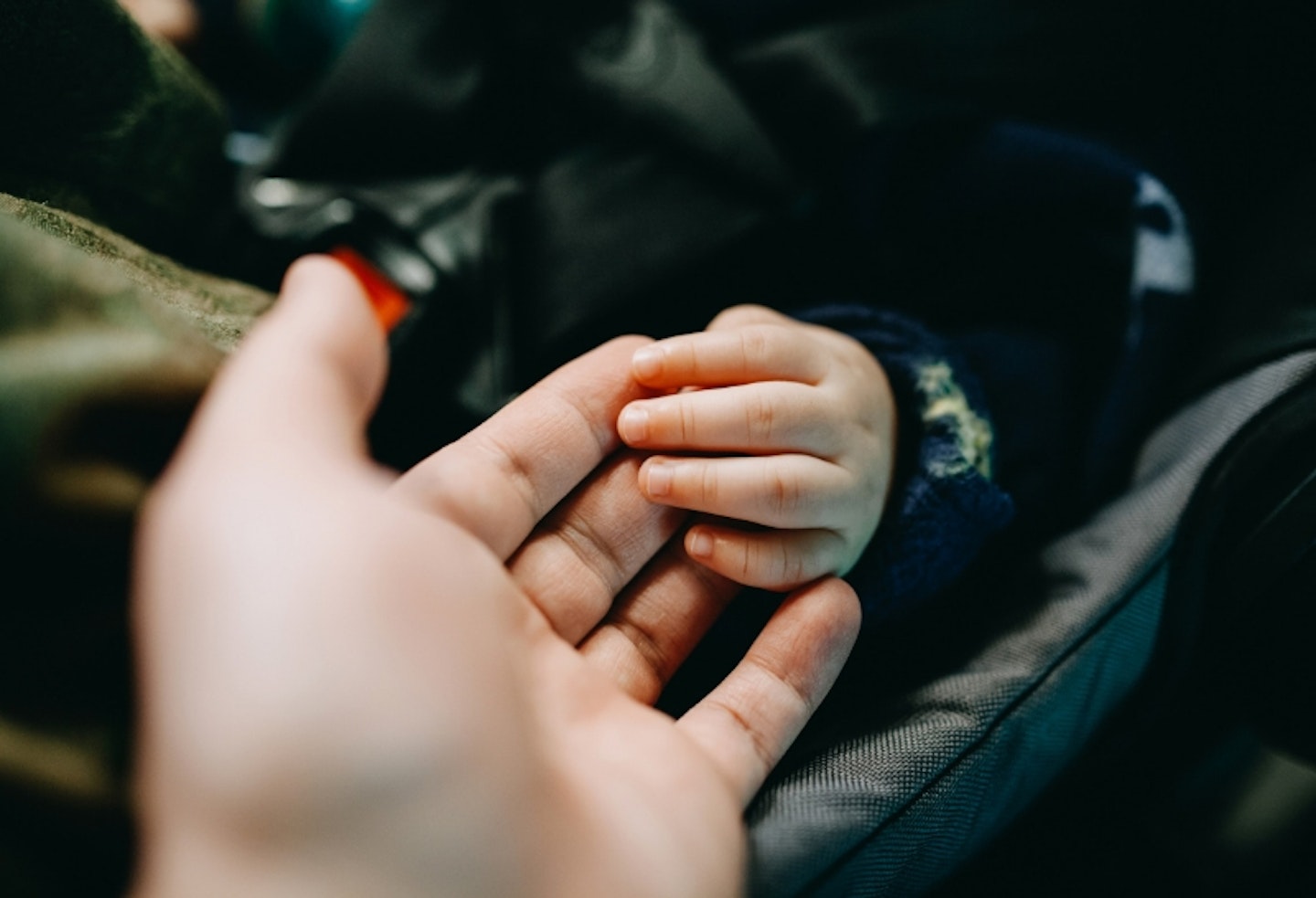 5 of 10
5 of 105) Do not leave babies unsupervised
Never leave young babies unsupervised in their car seat either awake or asleep. If a baby slumps they do not have the strength to hold their head up which can restrict their airways. It is important to always keep an eye on them but obviously in a safe way if you are driving.
The best and safest way to ensure babies are not left unsupervised is to have a second adult in the back to watch them. This is the ideal, however, we understand this is not always possible.
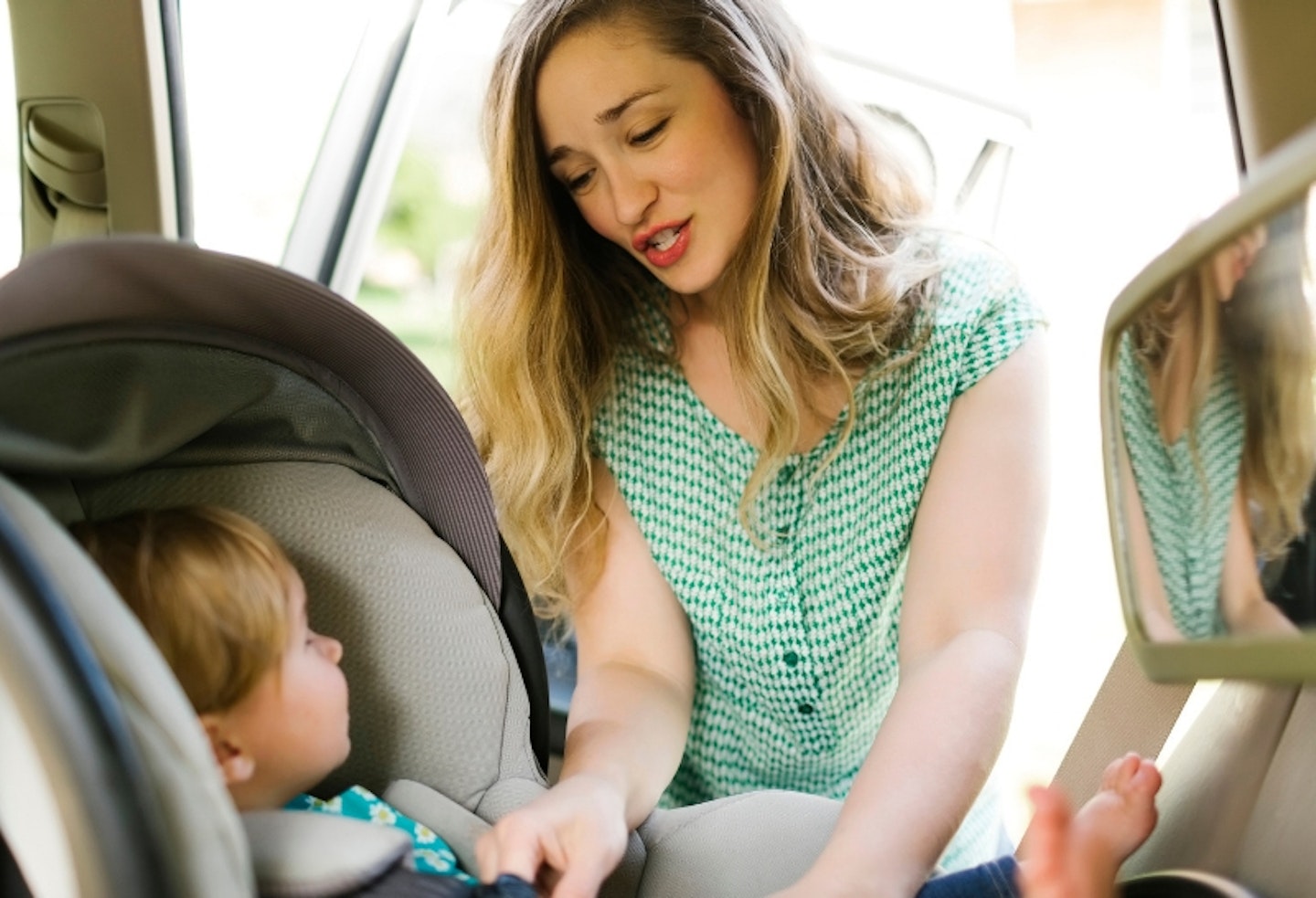 6 of 10
6 of 107) Use a mirror
IF a second adult in the back is not an option, use a mirror so you can see your child when they are rear-facing. However, making eye contact with your child while you are driving could stop you from concentrating. As previously mentioned, it is much safer to have a second adult in the back or to avoid driving on unecessary trips with a small infant where possible.
 7 of 10
7 of 108) Do not use the car seat as a sleeping area outside the car
Car seats are only suitable for car journeys. According to Baby Safe "The safest place for a baby to sleep is in a cot or crib on their back and in the same room as a parent or carer."
It is important to not use the car seat as general sleep environment for your baby as it is unsafe. Some parents might not want to wake the baby or have a travel system and like to take the baby out of the car without disturbing them. However, this is not recommended due to the seating position. You should not use the car seat as a sleeping area outside of car journeys.
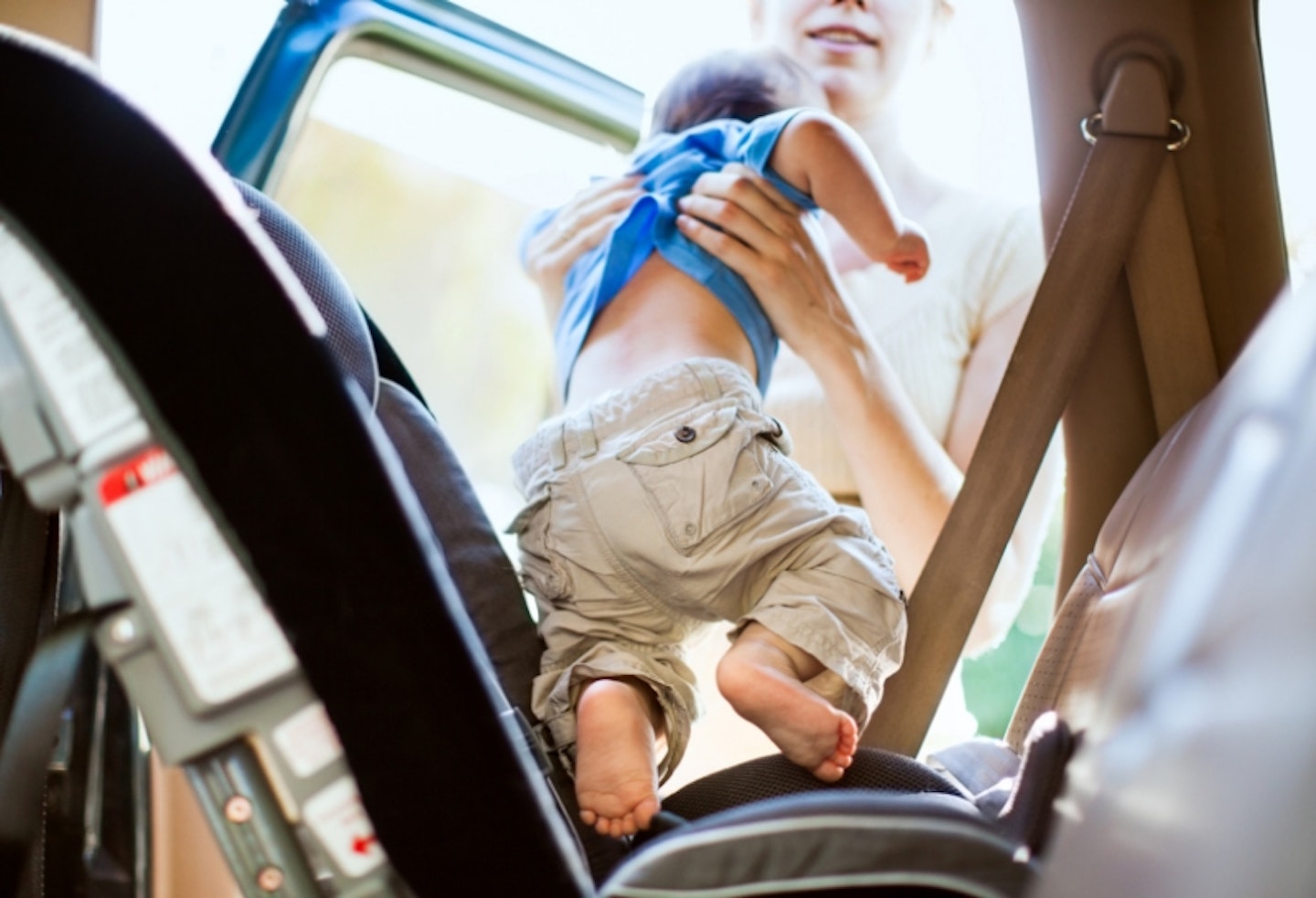 8 of 10
8 of 109) If the baby slumps, take them out of the car seat
The Lullaby Truststate firmly that "If a baby changes its position and slumps forward, then parents should immediately stop and take the baby out of the car seat."
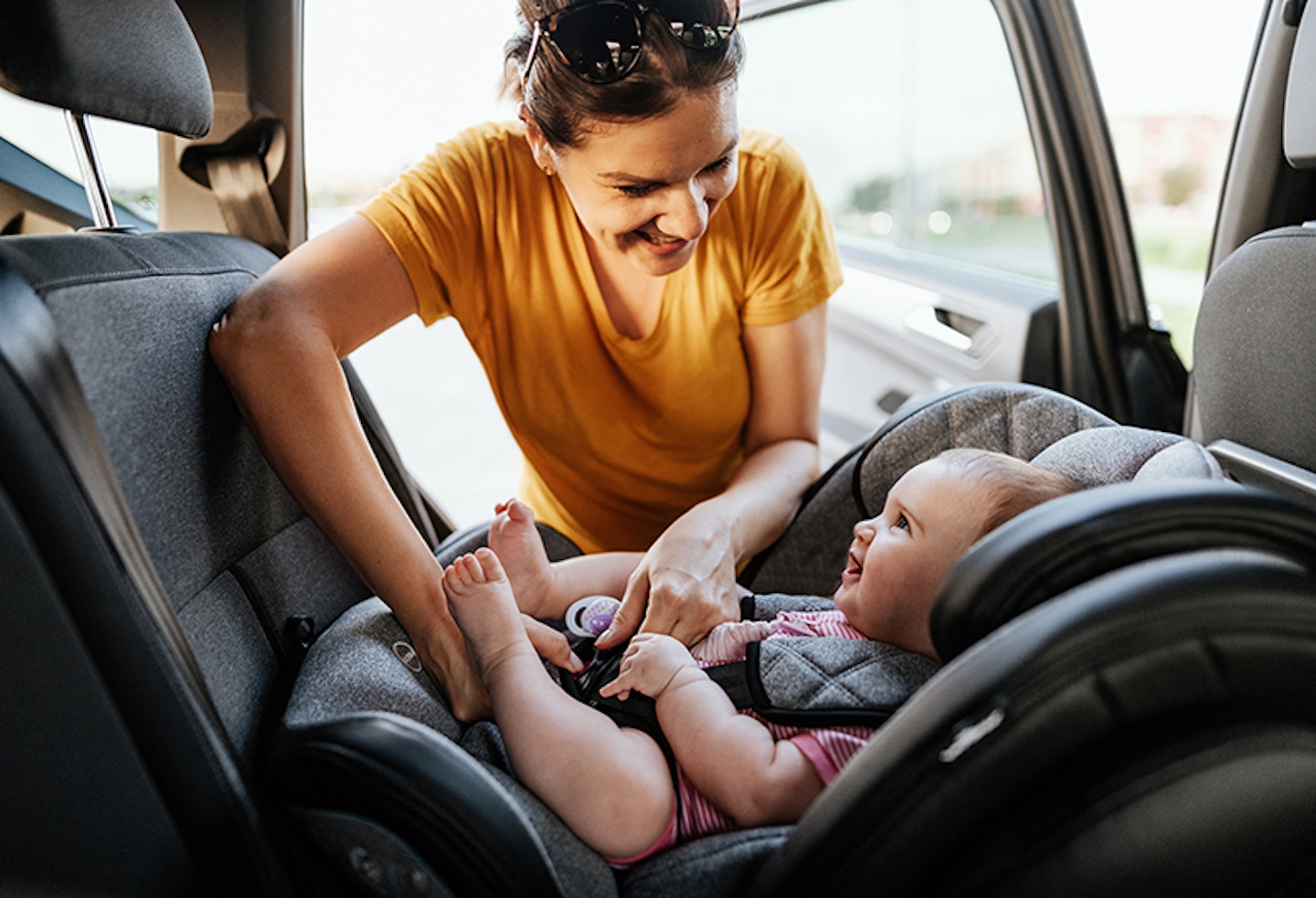 9 of 10
9 of 1010) Take breaks
If you really cannot avoid travelling then ensure that you take regular breaks. You need to take the baby out of the car seat so they are not in the same, potentially scrunched, position for prolongued periods of time. Sadly, this does mean even if you have to wake your baby up.
This is a good rule for both babies and drivers. The NHS explains that "As well as giving a baby a chance to move out of their car seat, it will also help keep the driver alert and reduce the risk of accidents." The Royal Society for the Prevention of Accidents recommends taking at least a 15-minute break every two hours.
 10 of 10
10 of 1011) Ensure your baby is appropriately dressed
Babies are not good at regulating their temperature. This means they can overheat quickly so remove hats as babies lose excess heat through their head. Even when it is cold outside, cars are likely to heat up quickly. Light and breathable natural materials are better because they will help your baby regulate their temperature more easily.
As technology improves, more research is undertaken and new evidence is discovered, the recommendations and guidelines on car seat safety are likely to change. Always make sure to do your own research and read up when you can so that you feel safe when using car seats or travel systems. Although some of the research seems scary, don't panic or become anxious. As long as you follow all the safety steps and guidelines you are doing the best that you can to keep your little one safe.
*The 2016 study was funded by The Lullaby Trust and conducted by the Great Western Hospitals NHS Foundation Trust, The University of Bristol and The University of Southampton.
